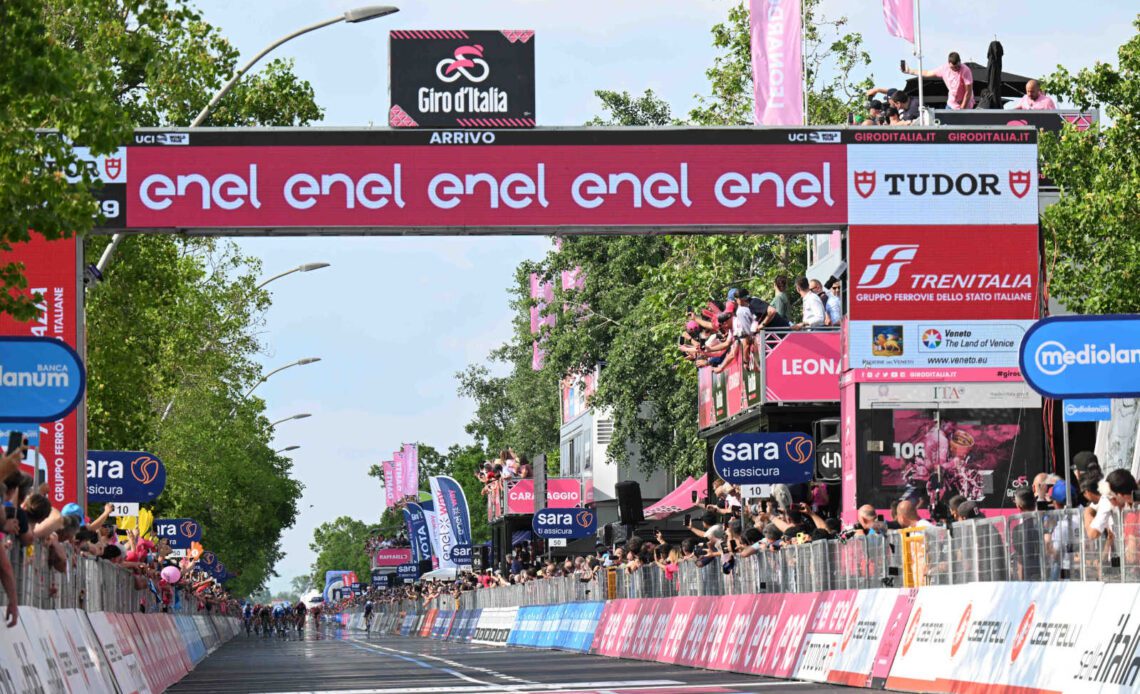If you’ve been following the Giro d’Italia or any pro men’s and women’s races, you’ve most likely witnessed the remarkable efficiency of leadout trains. Have you ever been amazed by a pro rider emerging from the peloton, surging ahead in the closing moments of a gruelling road race, and claiming victory? The synchronized beauty of a leadout train unfolds as each team’s riders take turns, peeling off one by one, perfectly positioning their sprinter for the final sprint with just a few hundred meters to go. Typically, the top teams start organizing with 5 or 10 km to go, intensifying their efforts in the final 2 km. The last rider in the leadout is essentially a sprinter themselves, sprinting full throttle before the final kick.
Gord Fraser, one of Canada’s fastest pro sprinters ever, winessed countless leadouts throughout his career. “I didn’t experience a proper leadout until I joined the Mercury team. In the first year, Julian Dean was our go-to leadout man. He moved on to US Postal, and the following year, we had a rotation of Mike Sayers, Derek Bouchard Hall, and John Peters,” he explains. “The next year, Henk Vogels became our primary leadout rider, with Baden Cooke joining as well. In 2001, the standout year for Mercury, we had the incredible leadout duo of Henk Vogels and Jans Koerts. The following year, Graeme Miller came on board to support Vogels and Sayers.”
SOUND 🔛!! “Left, left, LEFT!!”…
How about this for a #ThrowbackThursday. That time @AdamBlythe89 took us for a high-adrenaline, edge-of-the-seat ride through the peloton as part of @CalebEwan‘s sprint leadout #Cycling #VelonLive pic.twitter.com/oU4uib5LwM
— Velon CC (@VelonCC) August 15, 2019
Leadouts serve various crucial purposes, Fraser elaborates. In the closing kilometers, the team aims to keep their sprinter near the front and out of trouble. (Similar tactics are employed by GC teams leading up to climbs, with riders maintaining a high pace and the team leader positioned at the back of the train. As the climb begins, each cyclist peels off until the top climbers remain, supporting the highest-positioned rider in a favorable spot to counter attacks.)
“Many teams are incredibly well-coordinated, allowing the sprinter to conserve energy by simply following their train,” Fraser notes. This enables the designated sprinter to focus on their opponents amidst the often chaotic finale.
Honing your disaster-avoiding instincts while riding in a group

